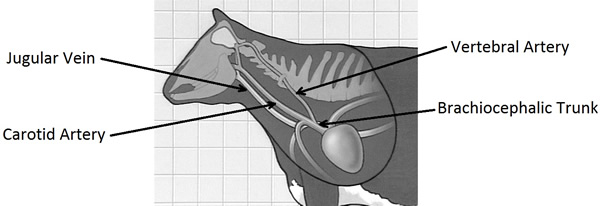The turkey’s status as a kosher bird is one of the most fascinating enigmas in the history of kashrut. It has long and widely been ruled that birds can only be eaten if they possess a mesorah. Turkeys, as birds native only to America, did not and could not have a mesorah. Yet it immediately gained near-universal acceptance as being kosher, and the discussion about its kosher status only began around three centuries later! Even then, the discussion revolved around a post-facto explanation of why it is kosher, rather than an evaluation of whether it is kosher. In order to understand all this, let us begin by reviewing the laws regarding kosher birds.
The Laws of Kosher Birds
Unlike the case with mammals and fish, where the Torah gives identifying characteristics by which kosher and non-kosher types can be discerned, the Torah gives no such signs for birds. Instead, the Torah lists various types of non-kosher birds. Since these are the ones specified as being non-kosher, all the ones not listed are ipso facto kosher. That sounds straightforward enough, but there are two complications.
First is that these listed types are not species in the scientific zoological sense of the term, but rather general types that include many species—yet the precise definition of “type,” and the number of species that it can include, is unclear.
The second complication is that we cannot "be certain as to the identities of the birds in this list. With some of them, we can be 99% certain—there is overwhelming evidence and/or powerful traditions that the nesher is the griffin vulture, the orev is the crow, the chasidah is the stork and the atalef is the bat. With some of them, we can offer a likely candidate—such as that the bat ha-yaanah is the ostrich, and the duchifat is the hoopoe. But many others are nothing more than an educated guess, based on factors such as the etymology of the word or cognate languages.
The difficulty of identifying the non-kosher birds in the Torah’s list (and the resultant difficulty of knowing which birds may be eaten) led the Sages of the Mishnah to give signs by which kosher and non-kosher birds can be distinguished:
"The signs of domestic and wild animals were stated in the Torah, and the signs for birds were not stated. However, the Sages stated: Every clawing bird is non-kosher, every bird that has an extra toe, a crop, and a peelable gizzard is kosher. Rabbi Eleazar b. Rabbi Tzadok says: Every bird that splits its feet is non-kosher." (Mishnah, Chullin 59a)
According to Rashi, in order for a bird to be kosher, it must possess all three positive signs (an extra toe, a crop, and a peelable gizzard), and it must also be known to be non-predatory. That is because, in Rashi's understanding of the Talmud, most of the non-kosher birds in the Torah's list possess the three positive signs; the reason why they are not kosher is that they are predatory. Since it is difficult to ever be certain that a bird is non-predatory, Rashi says, there must be a tradition that the bird is kosher. Rashi's view is adopted by Rosh.
But according to Rav Moshe bar Yosef, on the other hand, none of the non-kosher birds in the Torah's list possess all three signs. If a bird possesses all three positive signs, then this ipso facto means that the bird is non-predatory.
Rav Moshe bar Yosef's view, that the presence of the three signs alone suffices, finds most support amongst the Rishonim, including Rambam, Ramban, Rashba, Ran, Ritva, and Rif. However, the stringent view of Rashi, that the presence of the three signs does not prove anything and a tradition is always required that the bird is non-predatory and kosher, is cited by Shulchan Aruch and Rema and was widely accepted. Yet, since this was not the majority view among the Rishonim, and was only accepted as a stringency, this has significant ramifications.
The Discovery of the Turkey
The very name of the turkey, called tarnegol hodu (“Indian chicken”) in Hebrew, attests to the fact that there was initially much confusion about the origins of this bird.
In the early 16th century, a mysterious new bird reached England. it had been brought by “Turkey merchants” trading in the eastern Mediterranean, which was part of the Turkish Empire, and thus received the name “Turkey bird.” Meanwhile, many people thought that the bird came from India, due to the default assumption that new and strange things came from the East. In fact; there was even a common misconception that India and the New World were one and the same. Thus, in many languages the bird received the name “India bird.”
But this bird may not have been that which we today know as a turkey! In the 16th century, there were two new birds introduced to consumers in Europe: the American wild turkey and the African guineafowl. Both were variously called “Indian hen,” “Turkish hen” and also meleagris, Greek for guineafowl. Today, the name meleagris is also shared in the scientific names of the two species – the guineafowl is Numida meleagris, while the turkey is Meleagris gallopavo.
To complicate matters even further, turkeys were often simply referred to as large chickens. And in the 19th century, there were many new large breeds of chicken being imported from Asia, such as Cochins and Brahmas. Thus, in halachic responsa literature from that period, it is often impossible to determine whether they are discussing turkeys, guineafowl, or chickens.
The Halachic Discussion of Turkey
Concerns about the kosher status of the turkey were first raised in the 19th century, long after the turkey had already gained universal acceptance as a kosher bird. There were those halachic authorities, such as R. Yitzchak Isaac Schorr (Responsa Mei Be’er 19) and Kaf HaChaim (Yoreh De’ah 82:21), who justified eating turkey on the grounds that there must be an ancient tradition from India. However, for those who realized that the turkey was an American bird and could not possibly have a tradition, matters were more complicated.
It must be appreciated that at this point, declaring the turkey to be non-kosher would have denigrated pious Jews around the world who had eaten it for generations as being sinners. There is very strong rabbinic opposition to such a thing; first, due to the Talmud’s statement that God does not allow the righteous to unwittingly sin, and second, due to the principled position of not casting aspersions on earlier generations. Thus, there was strong motivation to find a justification for the common practice.
R. Naftali Tzvi Yehudah Berlin explicitly uses such a meta-halachic justification (Meshiv Davar, Yoreh De’ah 22). He states that since turkey has gained widespread acceptance, no objections should be raised to its consumption, in the absence of overwhelming evidence that it is actually a non-kosher bird. Otherwise, one would be incriminating earlier generations who have eaten turkey.
Others presented internal halachic arguments as to why eating turkey could be justified. R. Aryeh Lebush Bolchiver, in Arugot HaBosem, argues that the Ramo’s requirement of a tradition is only for birds about which there is doubt if they are predatory. But if a bird has been observed over a long period of time and has never shown signs of being predatory, then as long as it also possesses the three characteristics of kosher bids (i.e. an extra toe, a crop, and a peelable gizzard) then it may be eaten even without a mesorah.
R. Yosef Shaul Nathanson (1810-1875) argued that the acceptance of turkey itself proves that the Ramo’s requirement of a mesorah is not to be followed. As long as a bird possesses the signs of a kosher bird it may be eaten (Responsa Sho’el u’Meshiv 5:1:69).
Another possibility is that the initial acceptance of the turkey occurred before the Ramo’s view was promulgated and accepted. The scenario could well have unfolded as follows: First, turkey was eaten by Jews in eastern lands, who were the first to receive it from the Turkish merchants. They may have eaten it because they followed the majority view of the Rishonim that as long as it displays the kosher signs and is not predatory, it may be eaten. Subsequently, Jews in Europe became aware that eastern Jews were eating it. They may have assumed that this meant that there was an ancient tradition of eating it. This mistaken belief would have been enhanced by the fact that the turkey was not known to be an American bird, and further that it was confused with the guineafowl.
Whatever the explanation, one thing is clear: If turkey was discovered today, there is not a kashrut organization in the world that would permit it. Turkey became accepted because there was a window of opportunity in which new species were discovered at a time when there was much less clarity about their origins and much less stringency in halachic practice.
Meanwhile, on another note:
We are building up a collection of model Noah's Arks for a new exhibit at the Biblical Museum of Natural History. There are rare models that we need to obtain from far-flung locations in the US. If anyone is able to pick one up from Sycamore (just west of Chicago), or South Milwaukee, please be in touch! Also, if you are traveling to Israel and are able to bring some of the models that we have already obtained and are sitting in NY and NJ, that would be very helpful!
























